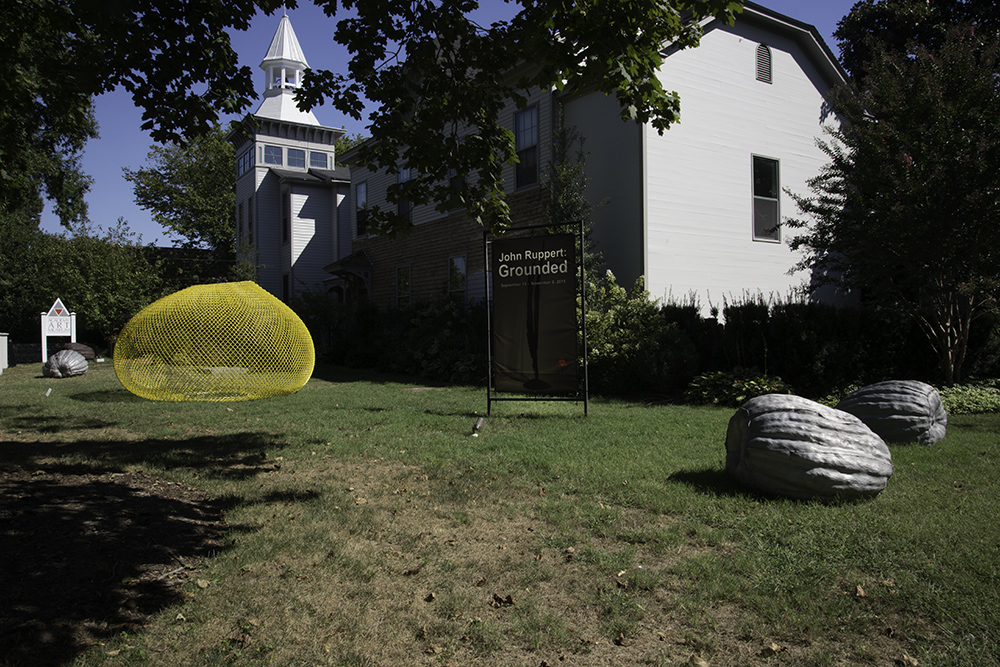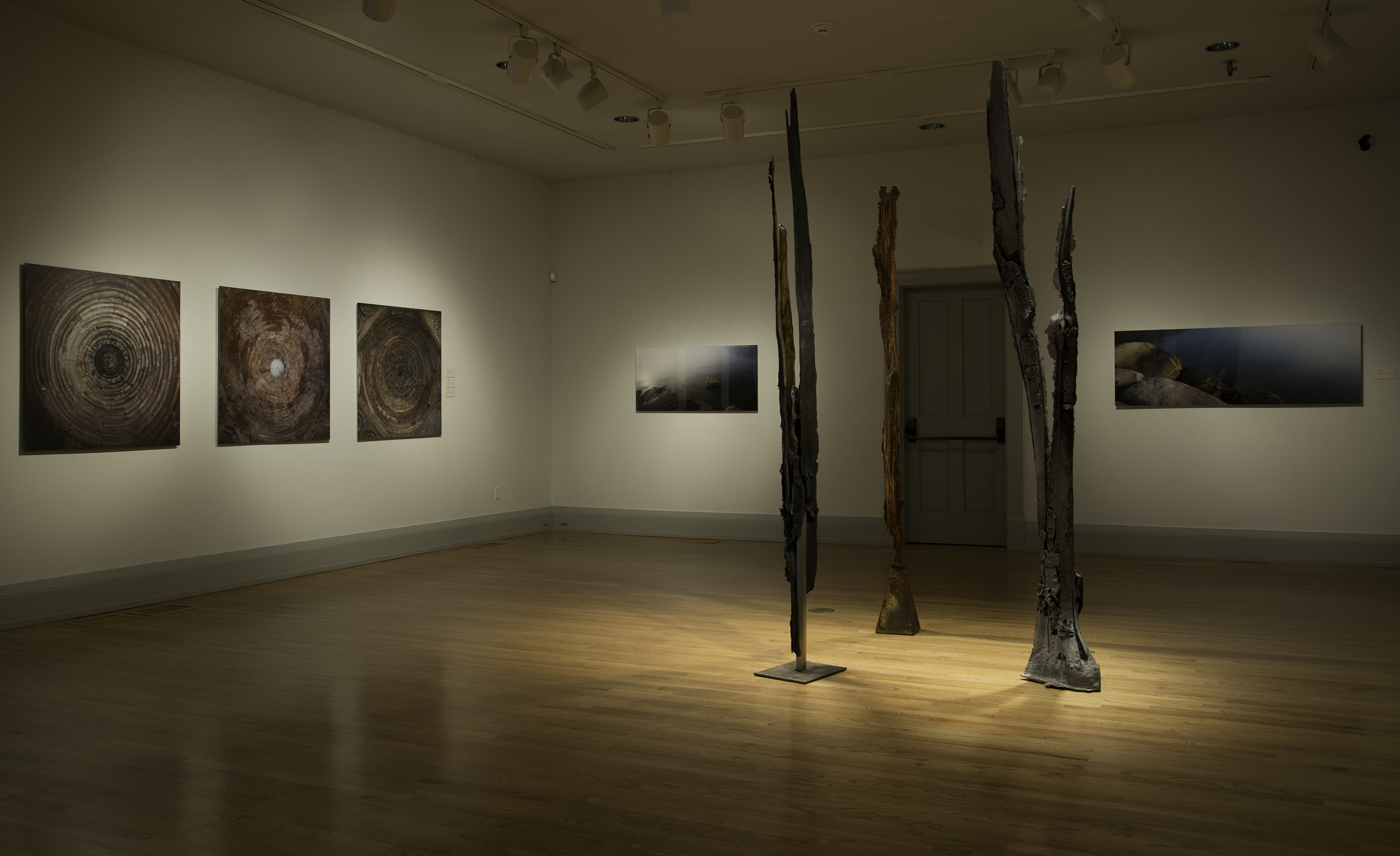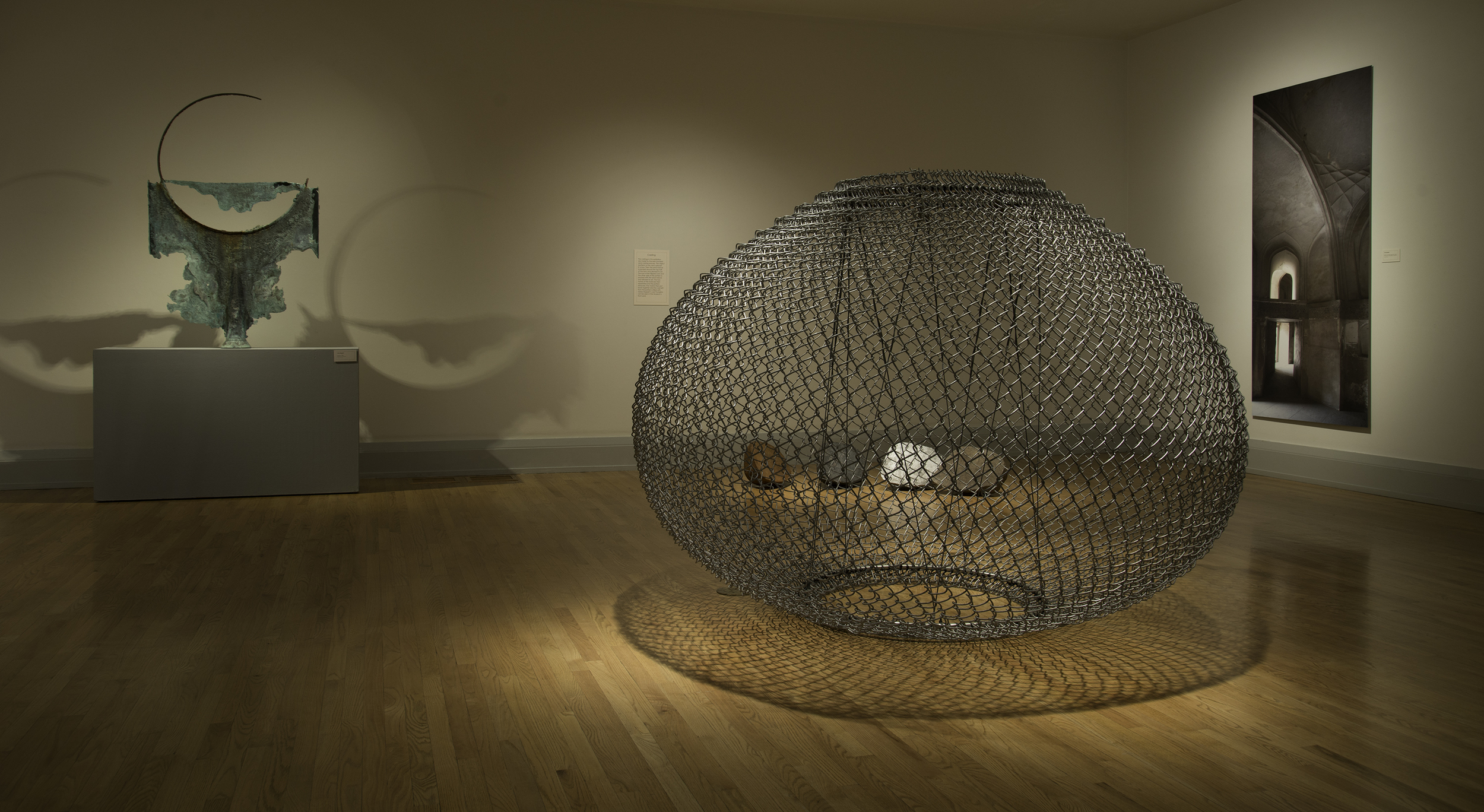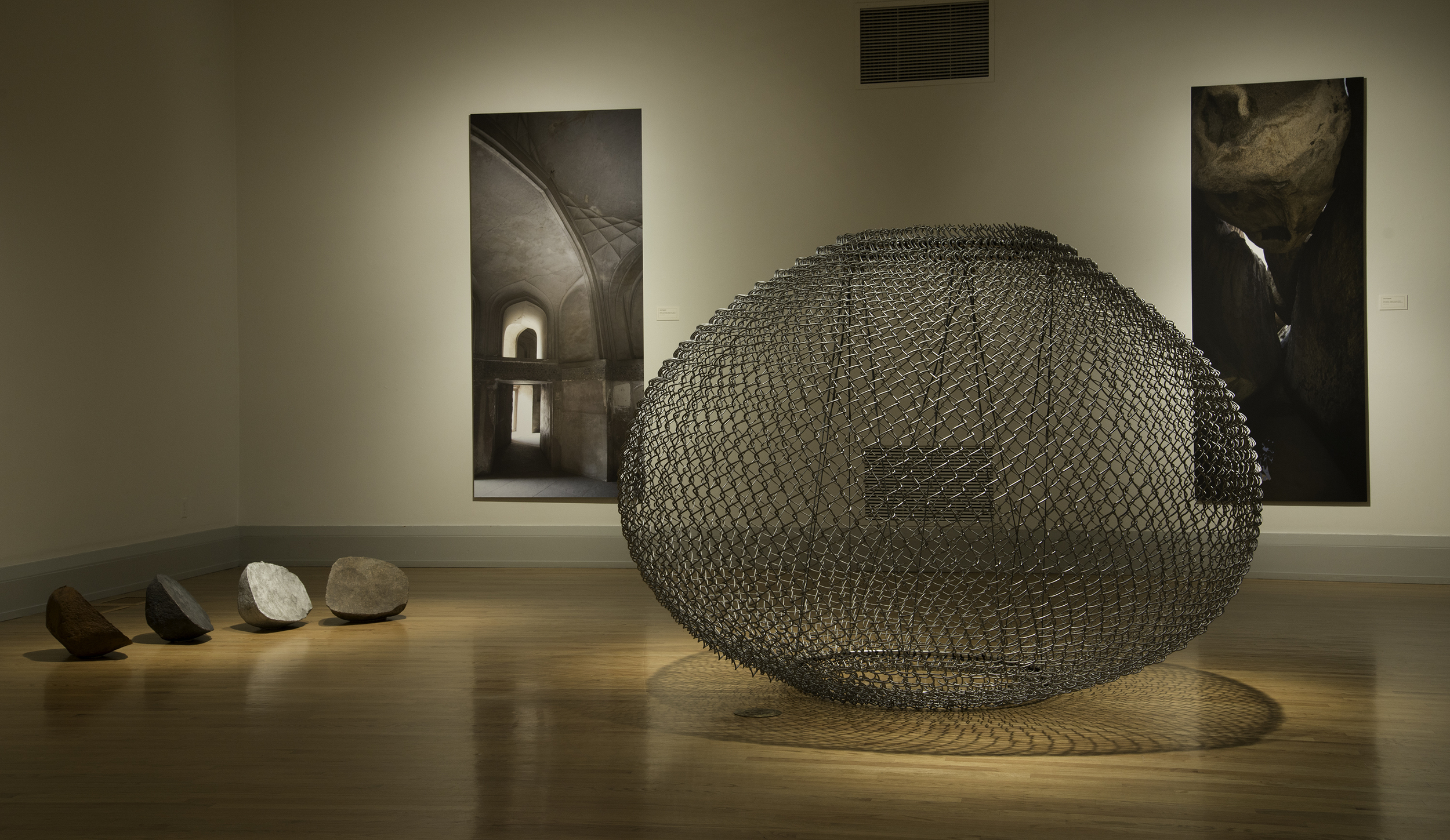Three huge pumpkins cast in aluminum and another one in rust-red iron lie on the Academy Art Museum’s front lawn. Sagging under their own great weight, they cheerfully evoke the force of gravity, one of John Ruppert’s favorite subjects. But although his exhibit, on view both outside and inside the Museum through November 8, is titled Grounded, gravity is only one force he conjures in his sculptures and large photographs. This show unfolds as a study of the ever-changing nature of physical form as Ruppert traces the effects of changing light, shifting atmospheres, moving water, geological forces, and time itself.
Like a young child or a scientist, Ruppert has a lively curiosity about the natural world and the ways its elements affect how we live. He is fascinated with the pull of gravity, the fiery origins of rock, the persistence of eroding waves, and lightning’s splintering power. But although his sculptures and photographs are large and powerful, they are tempered with impish humor.
Sharing the front lawn with the pumpkins is “Yellow Gourd, Homage to Van Gogh” from his ongoing series of vessel-shaped sculptures made of chain-link fencing held upright by the tension of its own structure. Most of these vessels are strikingly symmetrical, but this eleven-foot wide ovoid purposefully lists a little sideways, just like a gourd, and glows as yellow as one of Van Gogh’s sunflowers against the green of the grass.
A veteran of numerous gallery and museum shows and the recipient of many grants, awards and residencies, Ruppert has become known for his castings of rocks and “lightning strikes,” the splintered shafts of wood split when trees are hit by lightning. Jagged verticals towering nearly nine feet tall, his three freestanding “Lightning Strikes” dramatically evoke the brute force of lightning, but Ruppert doesn’t leave it there.
A quartet of smaller strikes, all cast from the same mold, are lined up on one wall like color samples at a paint store. Similar but not identical, each was cast with a different metal—bronze, stainless steel, copper or iron. It’s a textbook comparison of the varying effects of color, texture, detailing and sheen a sculptor can expect from these diverse materials. There are sparkly glints in the copper, while the soft sheen of the oxides left on the stainless steel trails off into delicate, lacy edges. The iron picks up much less detail yet there’s strength in its primordial reddish glow, and the frost of lichen-green patina on the sooty black of the bronze highlights the intricacies of the craggy wood grain lending it a quality of ancient hoariness.
Ruppert’s fascination with the process of creation is tangible throughout this show. His subjects invariably speak of their own making, whether they were formed by nature or by the artist. His sculptures are laced with ragged seams left by the molds they were cast from. Rather than polish this evidence away, Ruppert leaves them as clues to the process of their fabrication. Similarly, the subjects he photographs testify to their own particular origins.
Two tall vertical photographs share one wall of the gallery. Shot in the British Virgin Islands, glints of water in a shadowy chamber formed by a pile of massive granite boulders in “The Baths, Virgin-Gorda” tell of primeval lava flows, geological shifts in the sea floor, and millennia of weathering by waves and wind. The labyrinth of entryways and chambers in “White Chamber Agra Fort,” inside a UNESCO World Heritage site in India, shows the cleverness of its builders in designing to prevent a charge by the enemy’s elephants, then the primary vehicles of battle. In both cases, the photos describe the origins of places, natural or manmade, even as they masterfully evoke the intimacy of interior space and the promise of what can be glimpsed beyond.
Each of the images in this exhibit was created from a series of photographs digitally stitched together. This technique allows Ruppert to achieve a crystalline clarity throughout even as he combines individual moments of changing light and slightly altered perspective. These almost subliminal shifts give rise to an inkling that these places are not static and fixed in time but always changing and evolving, always in process.
There’s a pleasing irony in Ruppert’s work. His fine craftsmanship and mastery of sculptural and photographic techniques imbues his work with a quality of strength and physicality, yet his ideas are rooted in an exploration of the eternal process of change. The hardest rocks are worn smooth and round; the tallest tree is splintered by a flash of lightning. Throughout his work, time, the fourth dimension, is as palpable as solid form. Only one thing can be counted on and that is that time will change everything.





